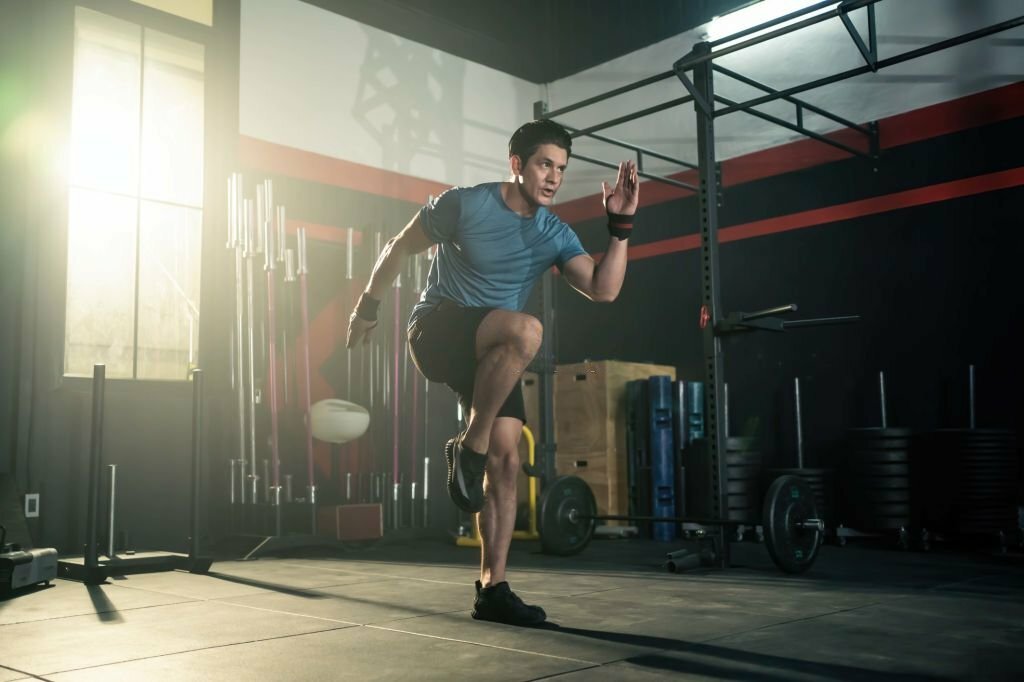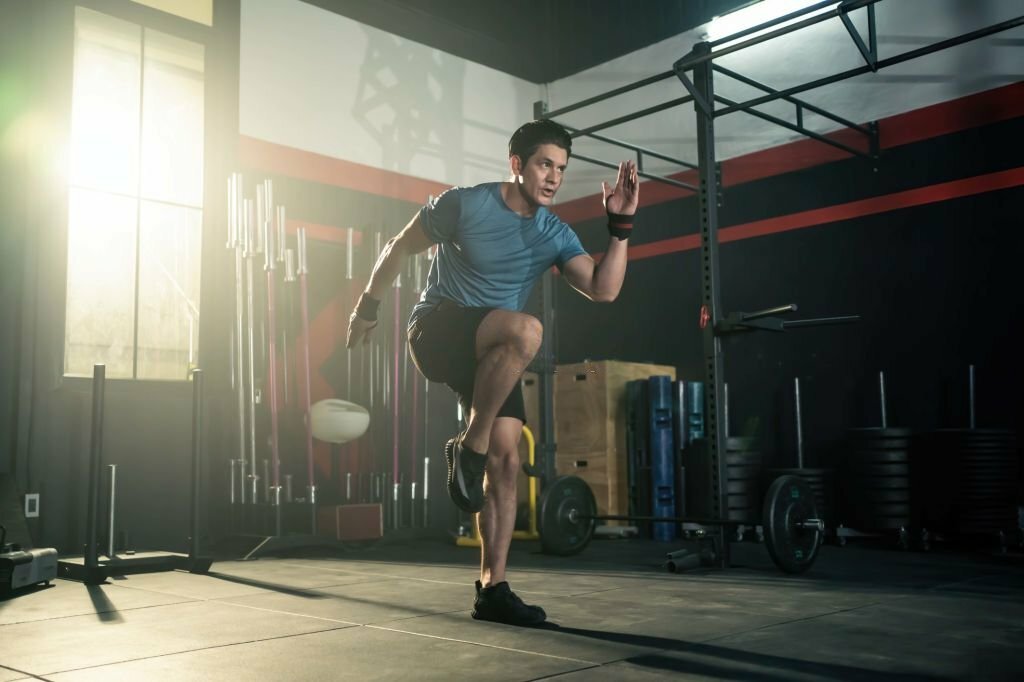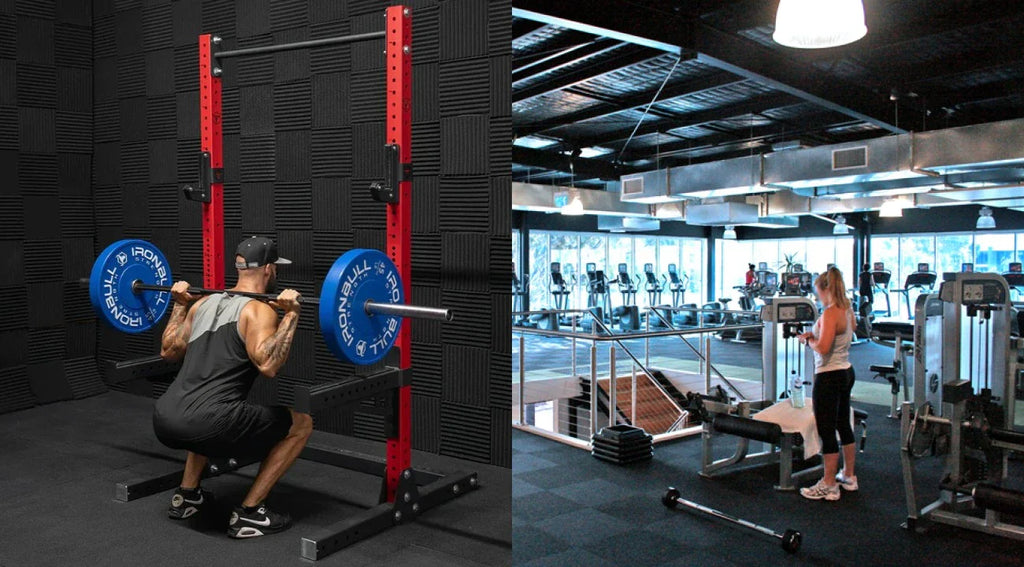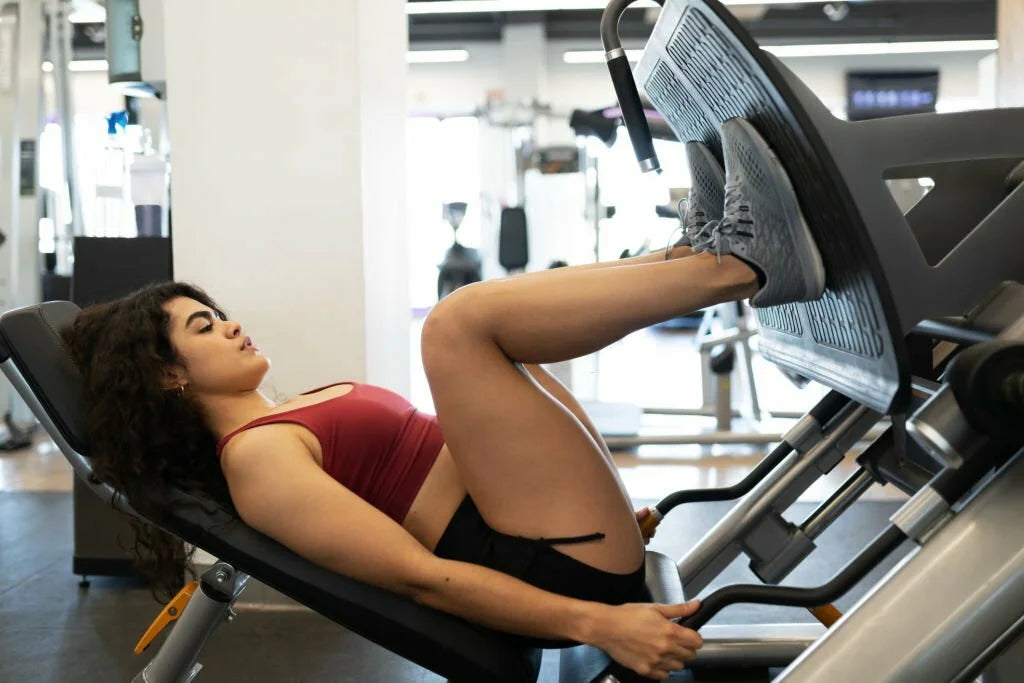How to Warm-Up Before Lifting Weights


When we’re busy, it can be tempting to forego the preliminaries and jump directly into our workout. As a personal trainer, I’ve seen firsthand how bad an idea that is. I vividly recall a client of mine, Joe, who was eager to make the most of his limited time at the gym. He thought skipping the warm-up and diving straight into his weightlifting routine would save him precious minutes. However, it didn’t take long for him to experience the consequences – a nagging shoulder injury that sidelined him for weeks.
Joe’s experience is just one example of how neglecting your warm-up can lead to setbacks and injuries. By the end of this article, you’ll have a clear understanding of how to warm up before lifting, the science behind warming up, the types of warm-up exercises that work best, and how to create a personalized warm-up routine that suits your needs and goals.
The Science Behind Warming Up
Warming up allows your body to transition from a passive to an active state, and it goes beyond merely raising your body temperature. Here’s a closer look at the science behind warming up:
1. Increase Body Temperature: When you warm up, your core temperature rises, essentially priming your body for action. This increase in temperature has several beneficial effects:
Improved bodily function and circulation: As your body temperature rises, it enhances bodily function and circulation, making your muscles more flexible and ready for movement.
Enhanced joint flexibility: Proper warm-up lubricates your joints, which is crucial for movements like squats and deadlifts, helping you perform exercises with better form and reducing injury risk.
2. Increase Blood Flow and Oxygen Delivery: A dynamic warm-up not only increases muscle blood flow but also total body blood circulation. This is pivotal for delivering oxygen-rich blood to muscle tissues and clearing out metabolic byproducts from previous workouts. With your blood flowing efficiently, you’re better prepared for the workout ahead.
3. Mental Preparation: A dynamic warm-up provides an opportunity for mental preparation. By following a consistent warm-up routine before each workout, you establish a ritual that can help you mentally prepare for your training session. It’s a chance to get into the right headspace and focus on the task at hand.
4. Injury Resilience: Warming up is crucial in injury prevention. It triggers physiological responses, including increased blood flow and heart rate, which help your body ward off injuries. It also helps your body gradually adapt to movements at greater intensity, reducing the risk of strain or injury during your workout.
5. Enhanced Workout Effectiveness: A proper warm-up makes your workout more effective. It heats up the fluids surrounding your joints, making them less thick and sticky, allowing for smoother and safer movements. Additionally, it activates your muscles, ensuring they work together cohesively, improving overall exercise form and performance.
Research Backs It Up: Numerous studies support the benefits of warming up. A 2010 meta-analysis of 32 studies found that a pre-workout warm-up improved performance in 79% of scenarios across various types of workouts such as running, swimming, and cycling. It’s clear that incorporating a warm up routine can make your workouts not only safer but also more effective.
Efficiency in Time and Enjoyment: Contrary to the notion that warm-ups add time to your workout, they can save you time during your actual exercise. With a proper warm-up, your body is ready to perform, and you won’t waste precious reps or sets trying to get in the groove. Moreover, the mental component of warming up allows you to switch into a different mindset, making your workout more enjoyable.
Types of Warm-up Exercises
Warming up effectively involves a variety of exercises that prepare your body for the demands of weight lifting and strength training. Here are four different components of a warm-up routine, each offering specific benefits:
Dynamic Warm Up
Unlike static stretching (holding a stretch for an extended period), dynamic stretching involves controlled movements that gradually increase your range of motion. This type of stretching has been shown to enhance muscle elasticity and flexibility while also promoting blood flow to the muscles.
Here are 5 effective dynamic stretching exercises:
- Leg Swings: Swing one leg forward and backward while standing, gradually increasing the range of motion.
- Arm Circles: Extend your arms to the sides and make circular motions in both directions.
- High Knees: March in place while lifting your knees as high as possible.
- Hip Rotations: Stand on one leg and rotate the opposite hip in a circular motion.
- Torso Twists: Stand with your feet shoulder-width apart and twist your torso from side to side.
Pro Tip: If you don't have anything to hold on to for stability, focus on engaging your core to maintain balance. If available, you can grab the post of a squat rack to support yourself and increase the leg swing range of motion.
Cardiovascular Warm-up
A cardio warm-up involves activities that increase your heart rate and body temperature, preparing your cardiovascular system for the upcoming workout. Here’s why cardiovascular warm-up is beneficial for your weight training workout:
- Elevates heart rate and oxygenates muscles.
- Increases body temperature.
- Boosts circulation and readiness for exercise.
Here are some good cardiovascular warm up options:
- Jogging: A light jog or brisk walk for 5-10 minutes is an excellent way to warm up.
- Jumping Jacks: Performing jumping jacks helps increase heart rate and body temperature.
- Cycling: If you have access to a stationary bike, a short cycling session is effective.
Specific Muscle Activation:
Specific muscle activation exercises target the muscle groups you plan to engage during your weightlifting or strength training session. These exercises activate and engage the muscles you plan to work. Enhances neuromuscular connection. Prevents muscle imbalances.
Five effective muscle activation exercises:
- Glute Bridges: Lie on your back with knees bent, lift your hips off the ground, and squeeze your glutes.
- Shoulder Rotations: Rotate your shoulders backward and forward to activate the shoulder muscles.
- Bodyweight Squats: Perform bodyweight squats to activate your leg muscles before squatting with weights.
- Push-Up Variations: Engage your chest and triceps with push-ups or push-up variations.
- Planks: Activate your core muscles with a plank hold.
Mobility Drills
Mobility drills focus on improving joint range of motion, which is crucial for performing exercises with proper form and reducing the risk of injury. Incorporating mobility exercises into your warm-up routine can significantly benefit your flexibility and movement.
Mobility Drills increase joint flexibility and range of motion. They also improve overall mobility and may enhance exercise form and technique.
Four examples of mobility drills:
- Hip Circles: Stand on one leg and make circular motions with your hips to enhance hip mobility.
- Wrist Mobility Drills: Perform exercises to improve wrist flexibility, which is essential for exercises like push-ups and bench presses.
- Ankle Circles: Rotate your ankles to enhance ankle mobility, which is crucial for squats and deadlifts.
- Neck Rolls: Gently roll your neck in both directions to improve neck mobility.
Incorporating a combination of these warm-up exercises into your routine will prepare your whole body, ensuring that you’re ready to tackle your weight lifting and strength training workouts with confidence and reduced risk of injury. When you actually get under the bar, begin with a couple of light warm up sets.
Sample Warm-Up Routine
Here’s a sample warm-up routine I’ve based on a guy working on a split routine bodybuilding program. Today, he’s hitting his chest, triceps and calves, strating with the bench press. The recomended specific warm up exercises are:
- Cardiovascular Warm Up (3 Minutes):
- Start with a 3-minute light jog or brisk walk on the treadmill to elevate your heart rate gradually.
- Alternatively, you can perform jumping jacks or stationary cycling for the same duration.
- Dynamic Stretching (3 Minutes):
- Perform arm circles for 30 seconds, both forward and backward.
- Follow with leg swings for 30 seconds per leg, allowing your legs to swing forward and backward.
- Continue with high knees for 30 seconds, lifting your knees as high as possible.
- Complete this dynamic stretching sequence with hip rotations for 30 seconds per leg.
- Specific Muscle Activation (2 Minutes):
- Engage your chest muscles with 1 minute of push-ups or push-up variations.
- Activate your triceps by performing tricep dips for 30 seconds using parallel bars or a stable surface.
- Conclude this segment with 30 seconds of bodyweight calf raises to activate your calf muscles.
- Mobility Drills (2 Minutes):
- Enhance your chest mobility with chest stretches for 30 seconds, emphasizing deep inhales and exhales.
- Improve tricep and shoulder mobility by gently rolling your shoulders backward and forward for 30 seconds.
- Conclude your warm-up with 30 seconds of ankle circles, rotating each ankle to enhance ankle mobility.
What About Static Stretching?
While it used to be all the rage, static stretches before a workout has been proven to be a bad idea. Numerous studies have shown that doing so can actually make your workout less effective. When you elongate a muscle by stretching it, you are giving it conflicting messages.
Stretching relaxes and elongates, while the workout to come will do exactly the opposite – it will put stress on the muscle and cause it to contract. As a result, it is best to do static stretching at the end of your workout.
Your training session has created a large amount of tension in the muscles. Getting into the habit of going through a post-workout static stretching routine will reduce this tension and, thereby, improve the entire recovery process.
Here is an effective post-workout stretching routine that you can do after a lower-body workout:
- Quadriceps Stretch
- How to Perform: Stand on one leg and grab your ankle with your hand, gently pulling your heel towards your glutes. Hold the stretch for 20-30 seconds.
- Benefits: Relaxes and stretches the quadriceps muscles, which can become tight after leg-focused workouts like squats and lunges.
- Hamstring Stretch
- How to Perform: Sit on the floor with one leg extended straight and the other bent, with the sole of your foot against the inner thigh of your extended leg. Reach forward and gently grasp your toes or calf, keeping your back straight. Hold the stretch for 20-30 seconds.
- Benefits: Targets the hamstrings, which can tighten after exercises like deadlifts or leg curls, improving flexibility.
- Hip Flexor Stretch
- How to Perform: Kneel on one knee and step the other foot forward, creating a 90-degree angle with your front knee. Push your hips forward slightly and lean into the stretch. Hold for 20-30 seconds.
- Benefits: Relieves tension in the hip flexors, commonly used during exercises such as squats and lunges.
Conclusion
The importance of warming up before weight lifting and strength training cannot be overstated. Neglecting your warm-up can lead to injuries, setbacks, and hindered performance. A few moments to warm up will increase body temperature and blood flow, ward off injury, and make your workout more effective. Follow that with a warm up set and you’re good to go.
So, next time you’re tempted to skip the warm-up and dive straight into your routine, remember the valuable role it plays in unlocking your strength and ensuring a successful fitness journey. Buy out the extra few minutes for your warm-up; your body will thank you.











